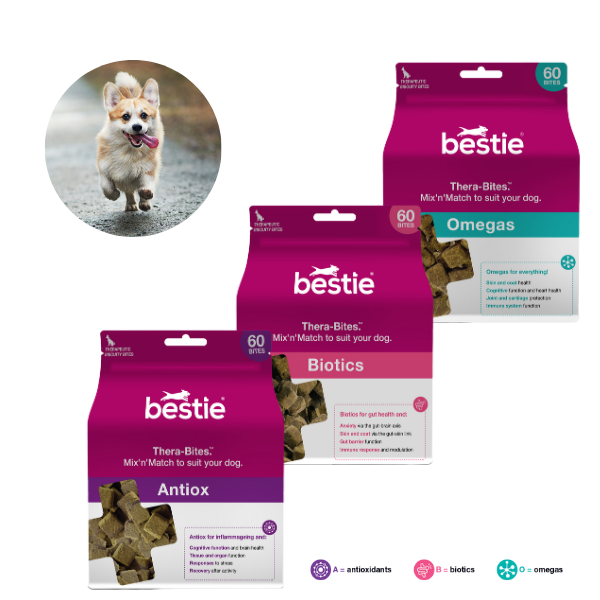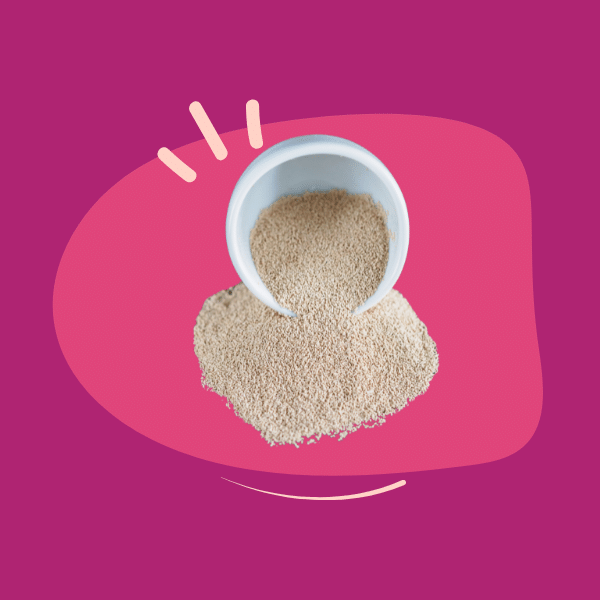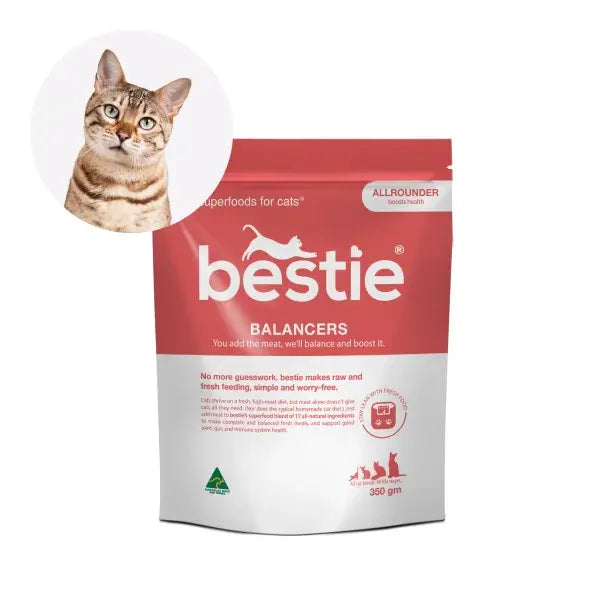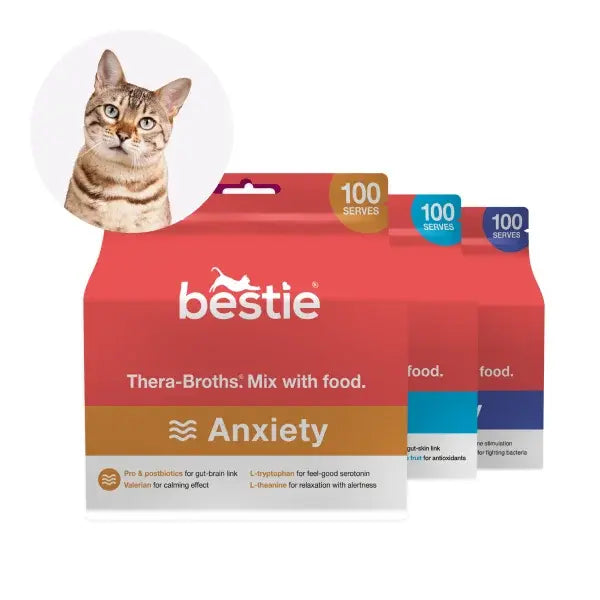This episode of The Pet Nutrition Show is a bit different. It involves an inheritance, a legacy, an interpreter, students from orphan backgrounds in Vietnam and pet food.
We interview co-founders of Googaga, a pet food company in Vietnam that makes cat pate, supports cat rescues around the country, and came into being after a series of English language lessons.
Dr Anna also doubles down on eggshells: should they be used as a 'supplement' and using them in a delicious recipe for Dr Anna's Vegemite Eggshell Biscuits. (yes, you read that correctly.)
(We also apologise in advance for audio quality that's not quite as good as normal.)
You can also listen on Apple podcasts here.
Here's the recipe in case you wanted to try it out:
Dr Anna's Vegemite Eggshell biscuits:
Ingredients
- 2 1/2 cups whole wheat flour (substitute with oat or coconut flour for dogs sensitive to wheat)
- 1/2 cup rolled oats
- 1 tablespoon dried parsley or mint (helps freshen breath)
- 1 teaspoon of vegemite
- 1 egg
- 1-2 tablespoon crushed egg shells
- 1 teaspoon beef or chicken bouillon granules (dissolved in 1/2 cup hot water; can use low-sodium)
- 1/2 cup peanut butter (unsalted and xylitol-free)
- 1 tablespoon olive or veg oil or butter
Instructions
- Preheat your oven to 350°F (175°C).
- Combine dry ingredients: In a large bowl, mix together the whole wheat flour, oats, dried parsley, dry milk, and salt.
- Mix wet ingredients: In another bowl, beat the egg with the dissolved bouillon mixture, peanut butter, and oil until well combined.
- Combine wet and dry ingredients: Add the wet ingredients to the dry ingredients and stir until the mixture begins to come together. You may need to use your hands to better mix the dough and ensure it's evenly moistened.
- Roll out the dough: On a floured surface, roll out the dough to about 1/4 inch thick. Use a cookie cutter in the shape of a bone or other fun shape to cut out the biscuits.
- Bake the biscuits: Place the cutouts on a baking sheet lined with parchment paper. Bake in the preheated oven for 20 to 25 minutes until they are browned and firm.
- Cool down: Let the biscuits cool on a rack before giving them to your dog.
Have a listen to the show, but if you’re more of a reader, here's the transcript:
[00:00:00] INTRO: This is the Pet Nutrition Show with Amanda and Dr. Anna.
[00:00:06] ANNA: Hello and welcome to the Pet Nutrition Show. I'm Dr. Anna Sutton and with my co host, interviewer extraordinaire Amanda Falconer, we talk all things pet food, pet nutrition, health and sustainability. Now today's show is a bit different. It involves an inheritance, a legacy, an interpreter, students from orphan backgrounds in Vietnam and pet food.
[00:00:31] ANNA: But first, it's time for Q& A.
[00:00:33] INTRO: Pet Q& A, where we answer what you're wondering about food, moods and poos.
[00:00:40] AMANDA: And, uh, a lot of people say that eggshells are a good thing to feed your dog and it's something that we can do at home. True or false?
[00:00:48] ANNA: Oh, Amanda, that's an interesting one. Look, eggshells are great.
[00:00:52] ANNA: They're mainly composed of calcium carbonate, which is an excellent source of calcium for dogs. But the thing is, most dogs, [00:01:00] and cats for that matter, get plenty of calcium from their regular diet and they don't really need any more, especially if they're fed kibble. In fact, if you feed excessive calcium, you can lead to a host of issues down the track.
[00:01:15] ANNA: For example, kidney issues or growth issues if there are puppies. So feeding straight eggshells, adding straight eggshells to your dog's diets. Probably not a great idea. However, despite all that, there are some really sneaky benefits with eggshells. And it's more related to the membrane that lies just inside the eggshell than the outer bit itself.
[00:01:36] ANNA: And, and that membrane's packed with proteins including collagen. And these glucosamine glycans, which are basically long sugar chains that hold water in cartilage and give it shock absorption capacity and cushioning. To try and summarize all of that, yeah, eggshells actually have got some great things about them.
[00:01:56] ANNA: Bye. But they're really best used as an ingredient, perhaps as [00:02:00] part of a homemade treat, rather than being dumped on top of your kibbles bowl.
[00:02:05] AMANDA: Now to find out more about that mysterious story of the inheritance, the legacy, and the pet food company started in Vietnam, we're talking with Minh Bui and Jenny Nguyen.
[00:02:17] AMANDA: Minh and Jenny, how did the two of you meet? I started out volunteering.
[00:02:23] MINH: Teaching English for kids in Vietnam. And then I chanced across this orphanage called SOS that's set up by some Europeans. And there was a bunch of over 20 years old that no one wanted to teach. So I took them on board and they're starting out with about, uh, six of them and then it's expanded to about 10, but I got so busy.
[00:02:51] MINH: So I stopped temporarily and only teach a couple at the moment and that's how I met the girls.
[00:02:59] AMANDA: Okay. [00:03:00] Now you've been involved in an enterprise that they started, Goo ga ga pet food company in Vietnam.
[00:03:05] MINH: Correct? It's actually, we started together. I wanted to do something. Because my dad and my step mom passed away and left me a small amount of money, and I didn't want this to go and splurge on the holidays or car.
[00:03:20] MINH: He, before he passed away, he said to me that he, he felt his life was without a legacy. And I thought to myself, you know, I want to do something with it. So I held that money for about 15 years, or 13 years to be precise. And then, uh, when one of the kids say, I want to do something with my life, I don't know how.
[00:03:41] MINH: And I started out talking to the kids and we decided we're going to make cat food because one of the kids is a wife of a vet and she has a vet practice in Vietnam and they identified wet food, cat pâté as a thing to [00:04:00] do. And we started that spur of the moment idea. That's how it started.
[00:04:04] AMANDA: Goo ga ga basically makes cat pâté.
[00:04:07] MINH: Yes, we, we started out with wet cat food. And because there was a, there is a market for it. And then we are slowly going into dog's food soon, which is what we wanted to do. But at the moment, it's primarily cat food.
[00:04:25] AMANDA: So Jenny, why did you want to be involved with this project?
[00:04:29] JENNY: I want a challenge in business and I like to do this job.
[00:04:37] JENNY: Negotiating with partners, learn something new.
[00:04:41] AMANDA: You're one of the co founders of Gugaga. You're one of the three girls plus men who got Guga up and running. And you work in marketing and some manufacturing and basically whatever needs to be done. Is that right?
[00:04:53] MINH: It is. Yeah. Jenny. It started out with at the start, it was just testing the products to make sure that [00:05:00] the cats would eat our product.
[00:05:02] MINH: And then once that was successful, we had to go into the nitty gritty part of the business, the marketing, the finance control, the day to day business, and I'm too far away so I couldn't do any of that. So we needed Jenny to step up and took over that running business. role. She's, I took her under my wings and trained her how to run a business.
[00:05:28] MINH: So from a fresh face, 24 years old, who's virtually knew nothing of how to run a business. Jenny is now very good at doing that.
[00:05:38] AMANDA: You're an interpreter now in, based in Melbourne, but you were previously a banker and you're not 24. Let's be clear. Yes. Neither am I. I'm assuming you're not 24. You were able to call also on that financial experience to mentor them really across the whole business.
[00:05:55] MINH: Yes, that's correct. Back in my previous life, I worked alongside [00:06:00] a lot of small and medium sized businesses. I did a sting of internal auditors to audit the books for the small businesses as well. So I know how the business is running, what you need to look out for, cetera. The core of the business, how to get it grow, um, I was Now,
[00:06:21] AMANDA: you said that you had to work on developing food that cats like, and we know that cats are fussy.
[00:06:28] AMANDA: Am I right in thinking that that was a process that had some challenges? You didn't get it right on day one with
[00:06:33] MINH: the flavours, correct? Oh gosh, they start out in the kitchen. With all sort of fancy dreams. I got the prototype and then I sent the recipe back to Vietnam to my auntie in Ho Chi Minh City to test and it got sent to the vet practice which is another province in Vietnam.
[00:06:53] MINH: So it went everywhere and the cats took one look at it and go, we don't want this. [00:07:00] So in fact, uh, the research seeds and we were really desperate. And then we went, I went online and I looked up Anna and I had chats to Anna about what's involved. And I was very lucky because she talked to me and she understood where I was coming from.
[00:07:20] MINH: She gave me nutrition advice, vitamins advice, how to put food together for the cats, etc. Then I went back to the drawing board for another six months to test drive it. They still won't eat it. And during that time, I had to go out to Uncle Google and do a lot of research and a lot of readings of the master thesis from people all over the world on how Kepp's formula is put together, what's involved, what's the ingredient, and I still couldn't get it.
[00:07:54] MINH: So I went back to Anna again and I said, can you please help? And she [00:08:00] suggested the magical component. And I went back, and we got it. And the interesting thing is this plasma. We thought, oh, plasma, fantastic. So we went back to Vietnam and we sourced it. Now there's two types of plasma, pure red plasma to feed prawns farms.
[00:08:23] MINH: And the other type, which is the white plasma, which we didn't know. So we bought the red plasma and we cooked it in our kitchen. And we need the girl that didn't really die from the stench of it. Because she, she's a doctor in ICU. And she said, it's like I've never left ICU because the blood stench is so powerful.
[00:08:44] MINH: And obviously the cats refused it. It's more research, more reading. White plasma was the magical ingredient. It just took off.
[00:08:53] AMANDA: So how do you make your food now? Presumably it is made there in Vietnam. How are you selling [00:09:00] the food to Jenny?
[00:09:01] JENNY: We developed with the model fresh ingredients for the boss and also for me.
[00:09:08] JENNY: So our production process is start with researching. And developing products pay on essential needs of pets, provide nutrients that pets cannot synthesize themselves. We use the Korean high temperature scintillation technology up to 121 degrees. The product undergoes strict quality inspection through simple testing.
[00:09:43] JENNY: We also, uh, distributed in Vietnam through web, store, and we understand that each web has its own unique personality and preferences, which is why [00:10:00] We offer a variety of flavors, including beef, chicken, salmon, tuna, and mouse.
[00:10:08] AMANDA: Mice and rice. Is that right? Mice and rice. That's what I heard about that. I was thinking, wow, mice and rice.
[00:10:14] AMANDA: That's awesome. You know
[00:10:15] MINH: what? You'll
[00:10:15] AMANDA: never believe this, but
[00:10:18] MINH: one of my students, she's been selling this Japanese product. And it's sold really well. And then she told me, we have to do mine because it's selling like hot cakes. Unbelievable. So I went along with it and I start to look into how to do it. You know what?
[00:10:37] MINH: A week ago, she showed me the packet of the so called mice flavor. It's actually mousse. It's actually mousse! Wow, that's, that's classic. So we inadvertently went on into this new frontier that no one dared to go because the stigma that goes along with a mice is. Horrendous. [00:11:00] Especially in Vietnam, where flies just go everywhere.
[00:11:03] MINH: So yeah, that's how the Mite and Rise came along.
[00:11:07] AMANDA: Oh, I love that story. That's fantastic. Now, you've also collaborated with a pet rescue society. Can you tell me how that came about and what was involved?
[00:11:18] JENNY: We have had the opportunity to collaborate and partner with the Cat Garden Station. That is Uh, English name that they are, um, one of the most renowned cat welfare organizations in Vietnam.
[00:11:39] JENNY: We came to know them through social media and felt a strong resonance with cats getting stationed, love for animals as well as their admirable goals for their community, which is why we have had. [00:12:00] The chance to work together because we all want to do good things to be our community. We had donated some, uh, Well,
[00:12:15] AMANDA: you didn't just donate some, I think you donated 400 kilograms worth, didn't you?
[00:12:19] MINH: Yes. We decided to donate an ongoing 12 months contribution to the Bearcats station. So, each month, it would be, I think it's about 30, 40 kilos of food, so that the cat is warranted at least two meals of nutritious food a week. That's something that they don't have very often, so that's ongoing for 12 months.
[00:12:48] MINH: We also donated 3 400 kilograms, ongoing, that's our goal. to other associates cat rescue places [00:13:00] with the cat guard station. And the last time we did it, I think we gave each place 50 to 100 kilos of fresh food. We donated money for electric generators. We gave money away when there's cats that need urgent operations.
[00:13:19] MINH: You know, they just rescued cats off the street in very terrible conditions. We stepped in and we said we'll pay for the bills, et cetera. So at the moment, what we can do is quite limited because of the financial aspects, but we hope it grow to the point where we'll be more active on that front because I think to see pets suffering so much and so neglected and being abused, we want to do something on that front.
[00:13:47] MINH: We want to educate people at the moment. That's what, that's our goal is to grow to the point where we have enough resources and the finance to actually go further out of the [00:14:00] field and educate kids. The new generations on the importance of pets and the love for pets and the love for the community, the society.
[00:14:11] MINH: Now, that's what, that's our big goal. And here, I'm very passionate. You see cats suffering and dying. It's horrendous. And they just walk past. And this table and cats society, they have to operate in hidden addresses because. They are being pursued by the authority. They are not wanted by the neighbourhood that they're living in.
[00:14:38] MINH: I didn't
[00:14:38] AMANDA: realise that at all. And, and is it a big issue? Are there a lot of cats that end up not even just surrendered into pet rescue, but found and collected and taken to the, these rescue centres?
[00:14:51] MINH: Oh, that's the lucky ones. That's far and few in between. Because the cat rescue themselves are having to turn cats away because they are under [00:15:00] financial straits themselves.
[00:15:01] MINH: And even worse, people would actually eat cats, eat dogs, it's on the market, and it's, the abuse is endless, and it's horrendous. And there's also, there's so many things that's happening, there's a lot of hoodoos out there, but there's alongside of that, there's so many, I guess you can't really blame them because you live in a society where, Everything is harsh.
[00:15:29] MINH: Everything is, it's, you've got to really think for yourself. You don't have time to care for things that is considered to be
[00:15:37] AMANDA: trivial and you've got to accept it. Jenny, if I can just ask you, where do you think you will want to focus in terms of educational projects next?
[00:15:49] JENNY: We're one. To do something about educational projects, we cherish the dream of delicious meals and green, beautiful schools for [00:16:00] children in remote and disadvantaged areas.
[00:16:04] JENNY: Education can help children escape from poverty. We hope to have the funds, benefits for selling GugaGas products. We used to build schools in remote areas, providing them with basic equipment so that the children can develop intellectually and physically.
[00:16:32] AMANDA: How can people support you
[00:16:34] MINH: in this mission? Let me step in here.
[00:16:37] MINH: We work as a team and we want the best for our product. In terms of how people can support us, If you ever come across a young team that is passionate about an issue, give them a go, give them a chance, listen to them and what they want, take them on board, they're young, they have dreams and you can somehow support their dreams, that would be fantastic.
[00:16:58] MINH: I think that's all we wanted, or [00:17:00] that's what I wanted for the young people.
[00:17:02] AMANDA: And that's a great message to end on, so I thank the two of you, Jenny and Min.
[00:17:08] INTRO: It's time for Home Food Hacks with Dr Anna.
[00:17:11] ANNA: So today's food hack, Amanda, carries on our discussion around eggshells earlier. I was thinking what you do with eggshells, you could incorporate them into little biscuit treats for your dogs.
[00:17:23] ANNA: And it's pretty straightforward. You basically take a couple of cups of flour or a flour substitute like coconut or tapioca or so forth. Add in about half a cup of oats. You can always add Tablespoon or two of parsley or mint to, to help give a little bit of flavor and freshen your dog's breath. I like to add a teaspoon of Vegemite to give it a uniquely Australian flavor.
[00:17:48] ANNA: Whole egg for binding. And you can add the eggshell as well. And then if you've had raw eggshells left over from omelets, if you crushed them up really finely, you can add in a couple of tablespoons of [00:18:00] these into the mix itself. Add a teaspoon of chicken or beef. Or beef stock flavour. And dissolve those first in about half a cup of water, and that just makes, gives you the water for the dough.
[00:18:16] ANNA: Add about half a cup of peanut butter, unsalted. Definitely sweetener free if you can find it. About a tablespoon of olive oil or veg oil or butter. again just to help with texture. So mix those all up together. You might need to add a little bit of extra flour to get the dough into the best consistency.
[00:18:38] ANNA: Preheat your oven. I usually put it on around 160 to 180. Roll out your dough. Cut them into little shapes and roll the dough out quite thinly so it may be about one inch thick. Quarter to half a centimeter thick, just so that the biscuits cook properly in the middle. You can get your kids to cut them up if you [00:19:00] like.
[00:19:00] ANNA: Pop them in the oven, probably need 20, 20 odd minutes or so, until they're cooked. And hey presto, doggy treats with your used up eggshells. And of course you can eat them yourself, by the way.
[00:19:12] AMANDA: I love it. Anna's Vegemite Eggshell Biscuits.
[00:19:17] ANNA: They're actually pretty tasty and you can also add a little bit of cheese if you want to share them.
[00:19:22] AMANDA: Oh, I love that idea. Thank you very much, Anna. And as always, thank you for listening to us. We really hope you enjoyed the story of the Pet food experiment and company in Vietnam, and we look forward to hearing you next time. As always, if you wanted to ask us a question, uh, anything that you've heard or seen that you think, is that true?
[00:19:43] AMANDA: And why? Then feel free To messages on Instagram or Facebook. And of course, leave us a review on your favourite podcast channel. See you next time.
[00:19:53] INTRO: The Pet Nutrition Show is proudly presented by PlanetA Pet Food, bringing dogs, a [00:20:00] flexitarian diet that's good for them and the planet.


















